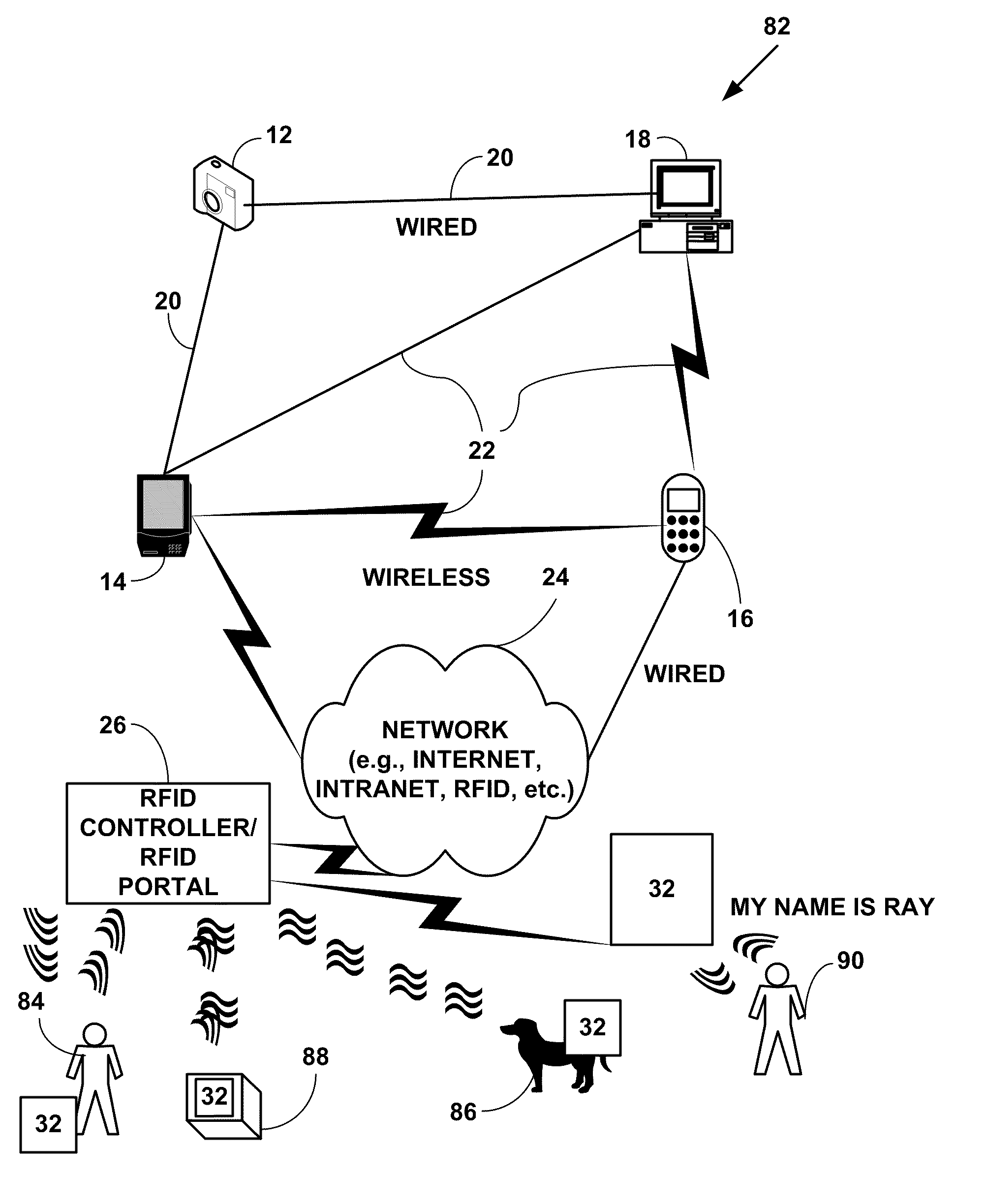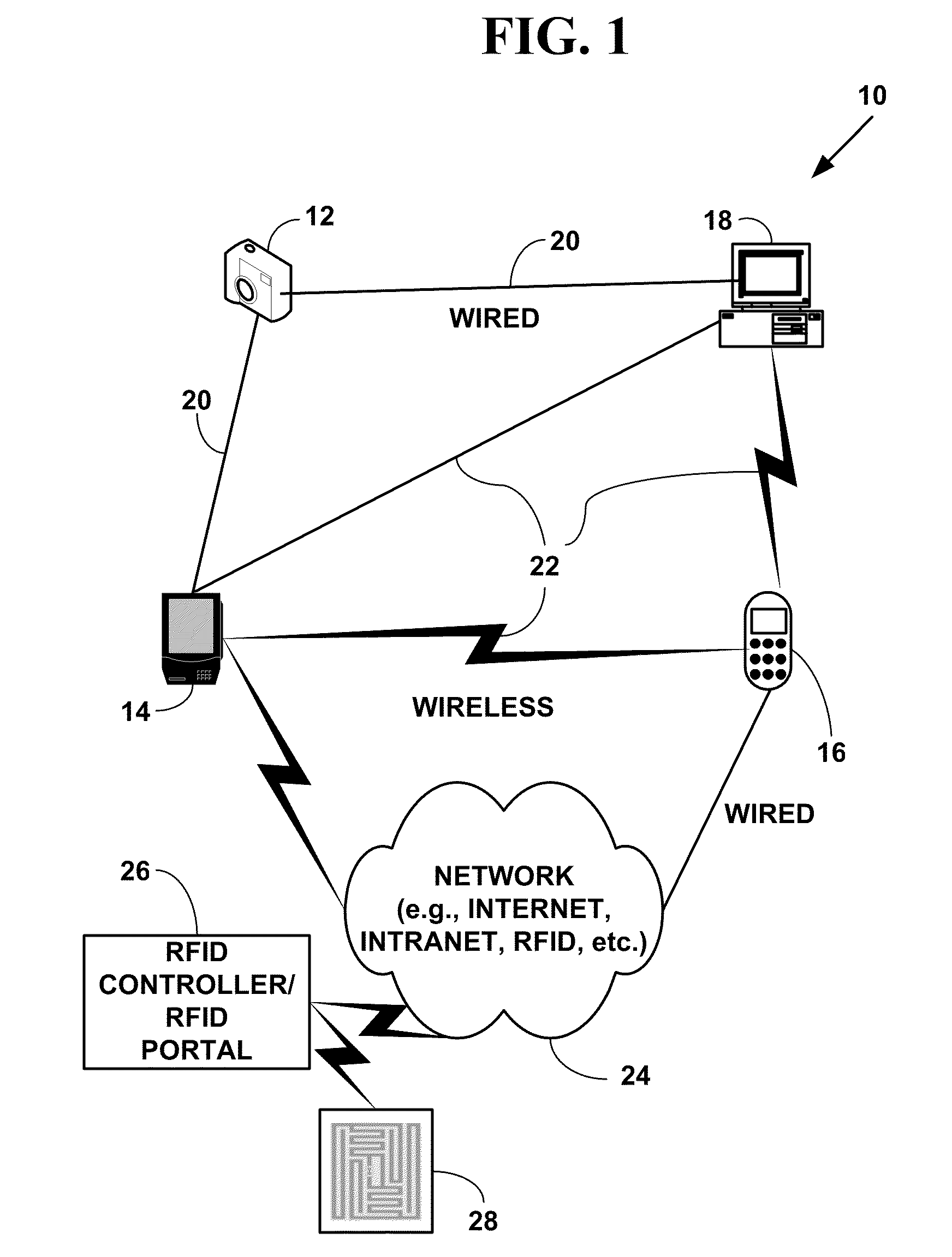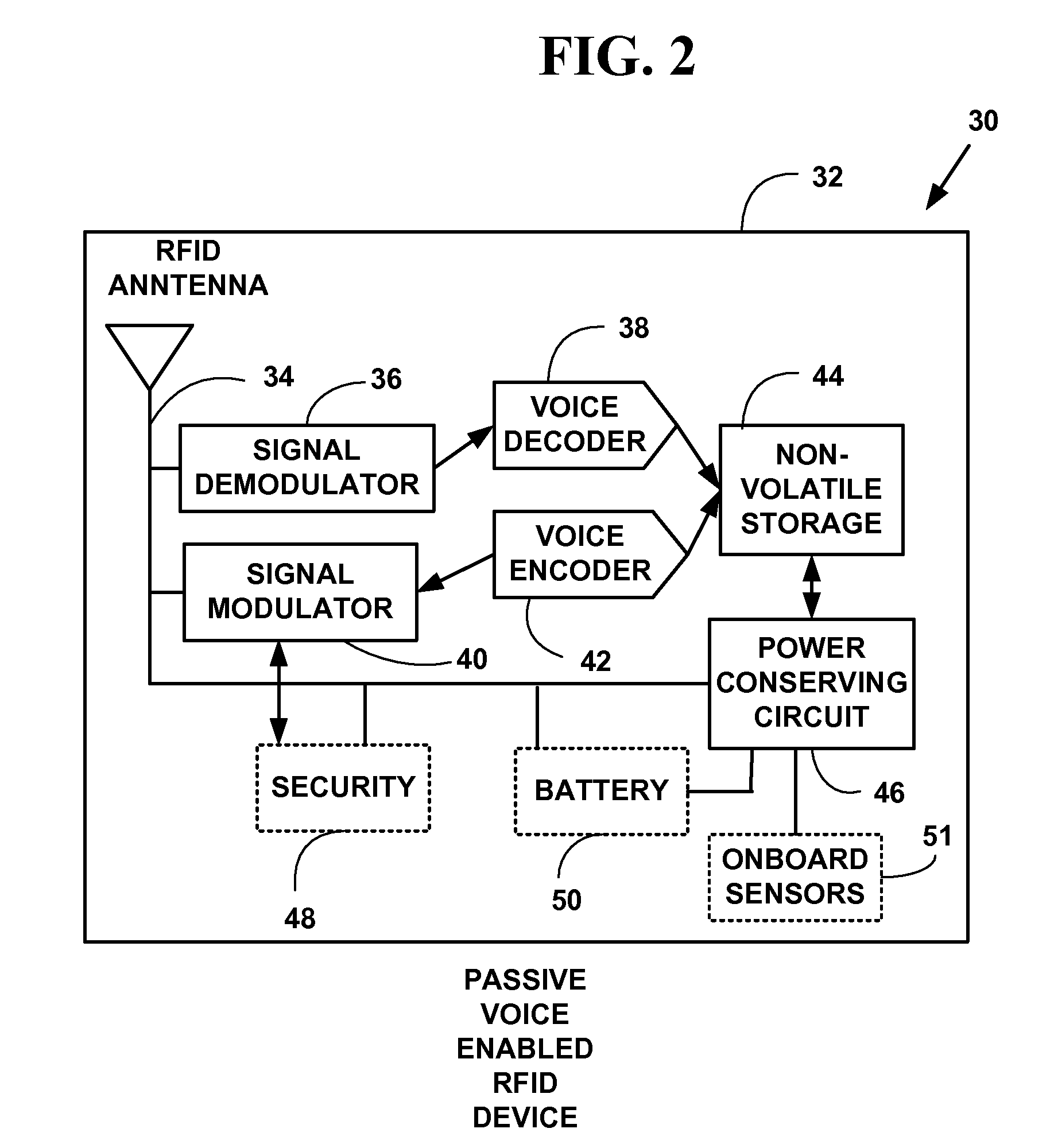Passive voice enabled RFID devices
a radio frequency identification and voice technology, applied in the field of wireless networks, can solve the problems of not being able to process voice information, unable to quickly and efficiently perform ground system certification, and affecting all space programs
- Summary
- Abstract
- Description
- Claims
- Application Information
AI Technical Summary
Problems solved by technology
Method used
Image
Examples
Embodiment Construction
Exemplary Communications System
[0032]FIG. 1 is a block diagram of an exemplary communications system 10. In one embodiment, the communications network includes a mesh network with a local area network (LAN) that employs one of two connection arrangements, “full mesh topology” or “partial mesh topology.” In the full mesh topology, plural nodes 12, 14, 16, 18 are connected directly to each of the others. In the partial mesh topology some nodes are connected to all the others, but some of the nodes are connected only to those other nodes (e.g., those with which they exchange the most data, etc.). The connections can be wired 20 or wireless 22. A mesh network is reliable and offers redundancy. If one node can no longer operate, all the rest can still communicate with each other, directly or through one or more intermediate nodes. Mesh networks work well when the nodes are located at scattered points that do not lie near a common line.
[0033]The plural nodes include 12, 14, 16, 18 but are...
PUM
 Login to View More
Login to View More Abstract
Description
Claims
Application Information
 Login to View More
Login to View More - R&D
- Intellectual Property
- Life Sciences
- Materials
- Tech Scout
- Unparalleled Data Quality
- Higher Quality Content
- 60% Fewer Hallucinations
Browse by: Latest US Patents, China's latest patents, Technical Efficacy Thesaurus, Application Domain, Technology Topic, Popular Technical Reports.
© 2025 PatSnap. All rights reserved.Legal|Privacy policy|Modern Slavery Act Transparency Statement|Sitemap|About US| Contact US: help@patsnap.com



